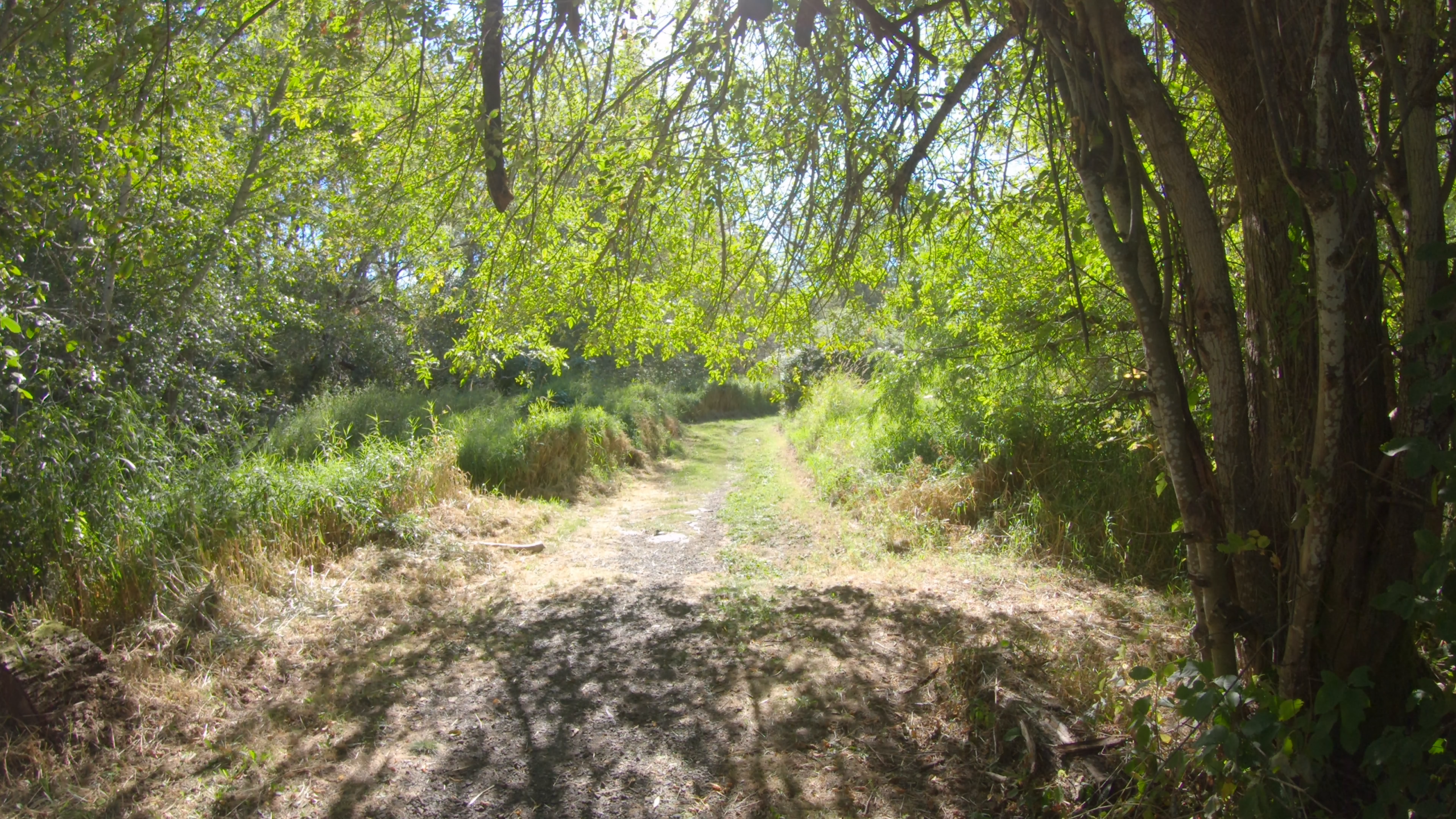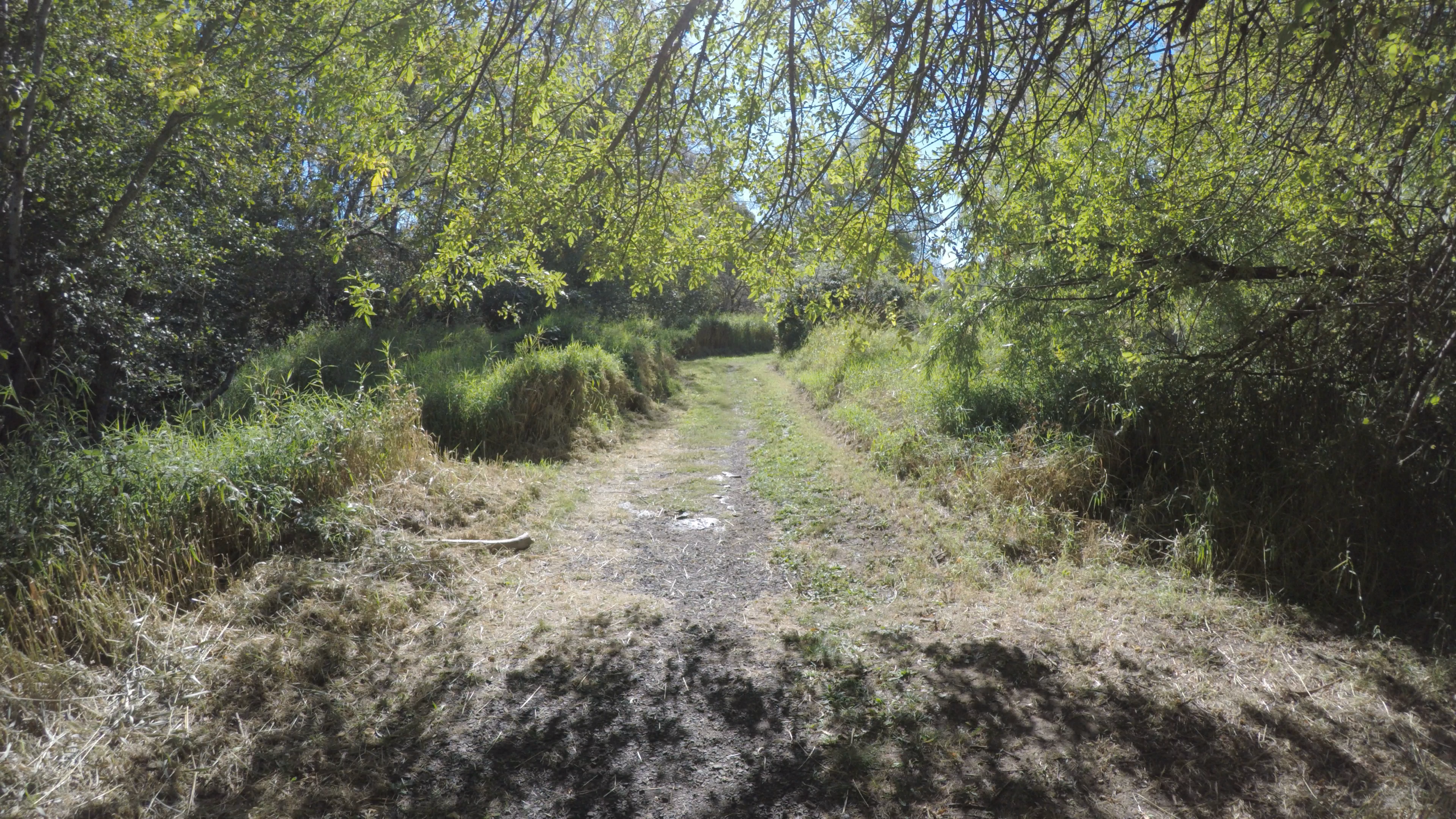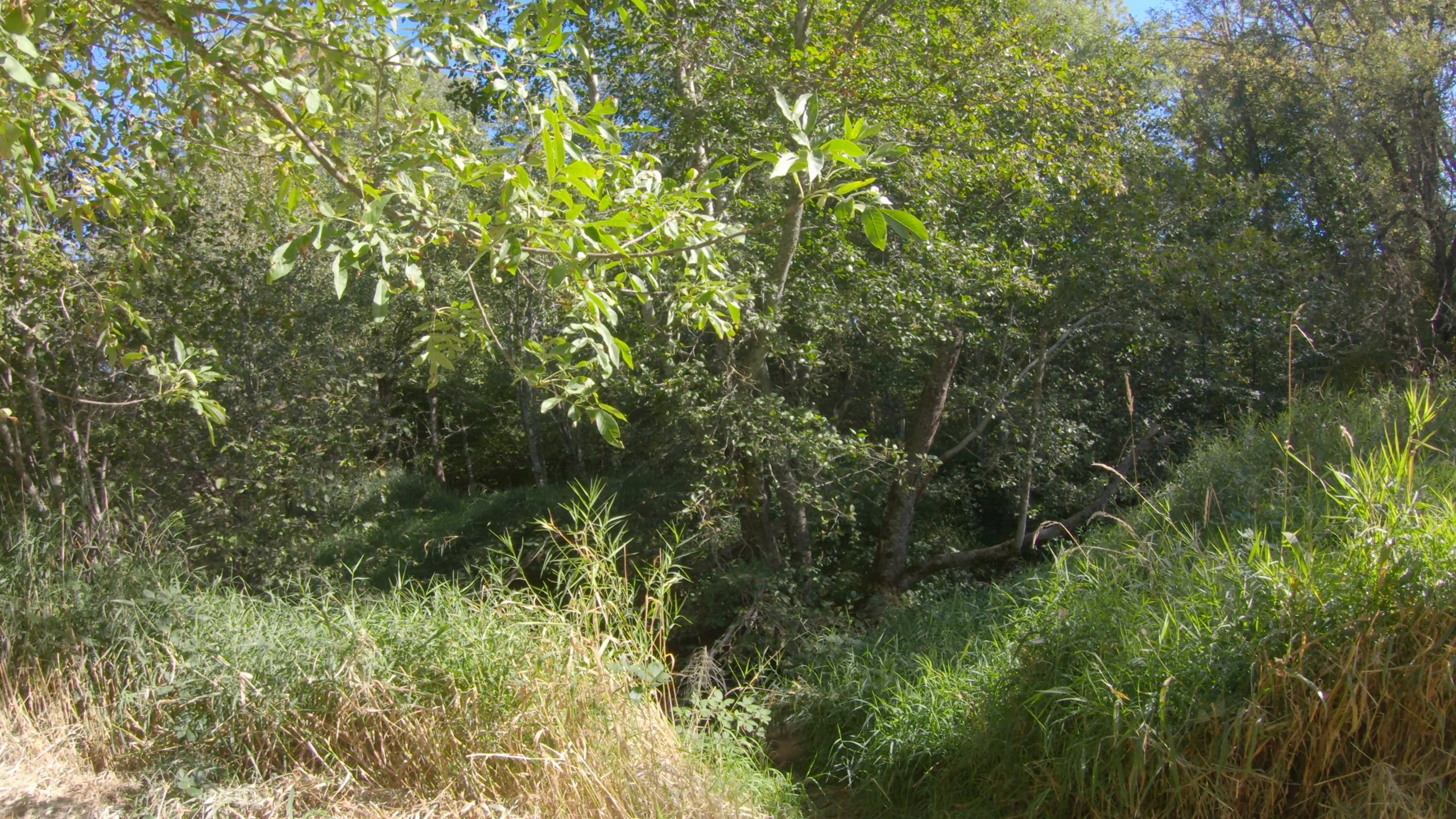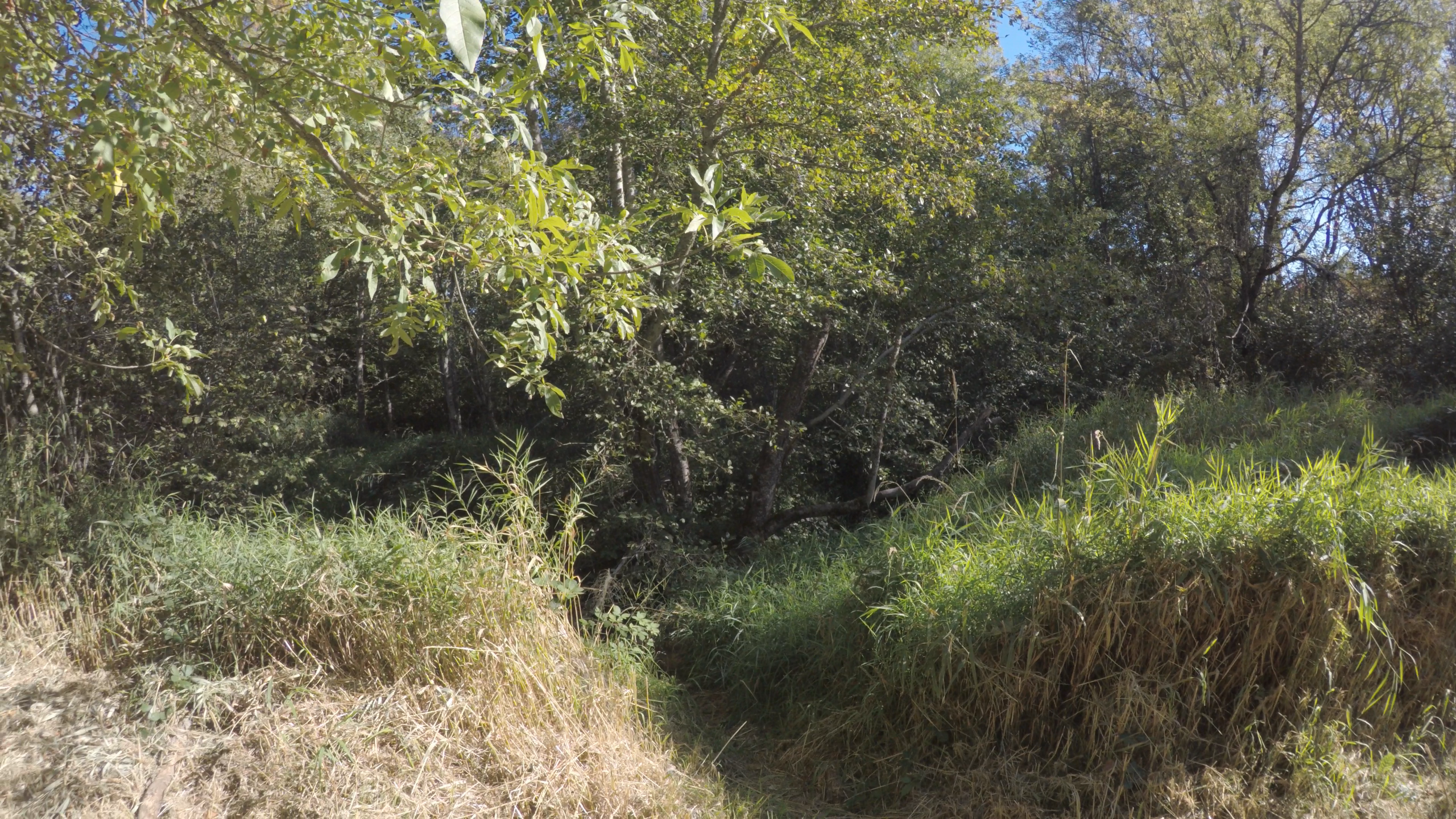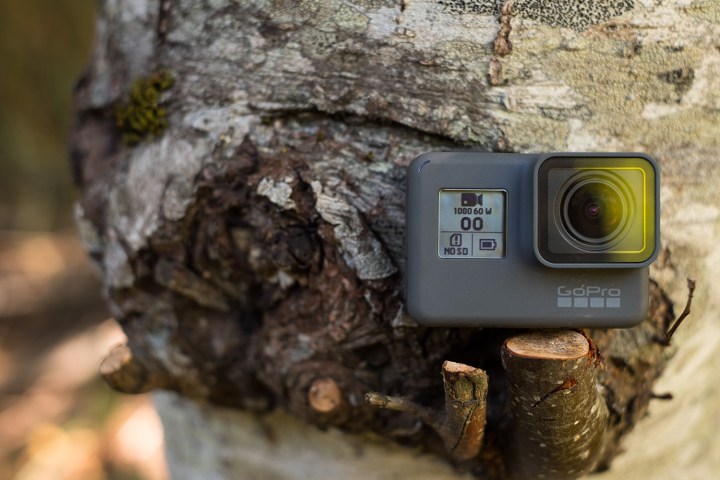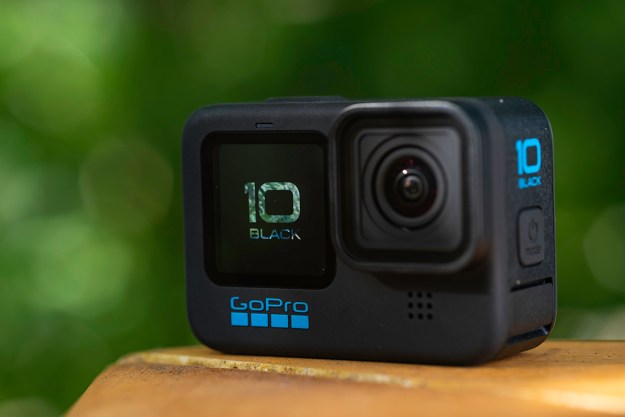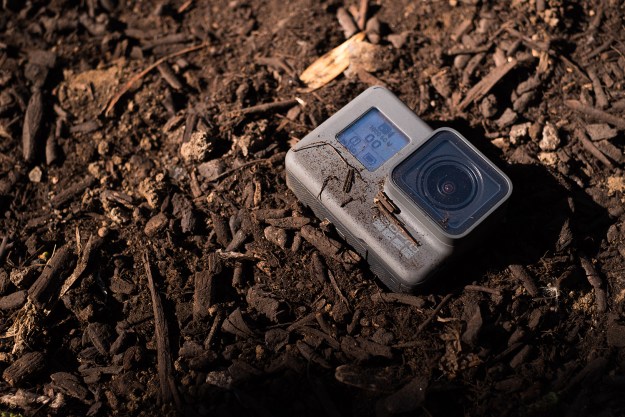
- Excellent electronic image stabilization
- 4K/60 and 1080p/240
- Improved dynamic range and color
- Great mobile app
- Refined, if familiar, design
- HEVC video is very demanding
In the tech world, there is an expectation that we will get more for our money next year than we do this year. Or, that we’ll be able to get today’s features for a lower price tomorrow. GoPro apparently has a different philosophy. The company recently introduced a new flagship action camera, the Hero6 Black, at $500. The Hero5 Black remains in the product line at $400 — the same price it held when it launched a year ago (the Hero5 Session also stays on at its original price of $300). This gives customers a less than ideal choice: get last year’s features at the same price, or spring for the latest and greatest at a new and higher price.
Unless you’re a professional, $500 is steep for an action camera. For some perspective, you could buy an entry-level DSLR kit for that. So during our GoPro Hero6 Black review, we focused on one simple question: Is it worth it?
Same look, new great features
The first thing that jumps out about the Hero6 Black is, well, nothing. It looks identical to the Hero5 Black, save the “HERO6” branding and a power button logo on the, um, power button (the Hero5 labeled the button for its secondary function, HiLight tagging). It is very easy to mistake the Hero6 for the Hero5, so if you own both cameras, you might want to put a sticker on one to clearly differentiate it.
To be sure, sticking with the same design was a good idea. It’s still waterproof without a case, the built-in touchscreen works great, and it’s immediately compatible with all of the same housings and mounts as the Hero5, including the Karma drone and handheld gimbal. Existing Hero5 (and even Hero4) customers won’t need to invest in any new accessories. (One downside: Battery life is also basically unchanged, so expect an hour or so of use under normal conditions).
But don’t let the familiar exterior fool you; the Hero6 is no mere incremental upgrade. It introduces a host of new features, many of which are possible thanks to a custom-designed processor called the GP1. Frame rates have been boosted across the board:
This brings the Hero6 up to speed with the Yi 4K+, the only other action cam to shoot
Speed isn’t the only new trick. The GP1 processor improves image quality, QuickStory edits (more on that later), and — most importantly — image stabilization, which now works at
A faster frame rate can be a real drag
However, most people are likely better sticking to
Unless you have a monster of a computer, HEVC video might be more trouble than it’s worth.
Generally speaking, HEVC is a good thing, but unless you have a monster of a computer, it might be more trouble than it’s worth. Machines more than a couple of years old will likely struggle to play back
That’s the big advantage of HEVC: lower storage requirements thanks to better compression. The Hero6 records
Image quality and stabilization
GoPro says the Hero6 also boasts improved dynamic range, which basically refers to how much detail a camera can see from shadows to highlights before something simply turns to pure black or pure white. With Protune (GoPro’s advanced settings mode) turned on and shooting in the “flat” color profile, we did notice a modest improvement to shadow detail, but the more noticeable difference was in the color. The Hero6 records much richer color than the Hero5, which makes the footage look better straight out of the camera.
That said, advanced users may have preferred the flatter look of the Hero5 as a good starting point for applying their own color grades. It’s also still a good idea to set your exposure compensation to minus 0.5 EV to avoid blowing out the highlights if you’re shooting outside on a bright day.
While we appreciated the increased saturation and dynamic range, image quality otherwise remains mostly the same. Low-light performance is more sensitive, but there is still plenty of noise (GoPro says it will continue to improve low-light processing over time as it refines the GP1). Like the Hero5, video (even in
Don’t let the familiar exterior fool you; the Hero6 is no mere incremental upgrade.
Fortunately, the Hero6 offers something even more important to image quality: vastly improved electronic stabilization. This is where the camera truly shines and begins to earn its price. Stabilization now works at
The Hero6 has the best electronic stabilization we’ve yet seen in an action camera. GoPro compared it to using a gimbal, and after testing it ourselves, we have to say that wasn’t much of an exaggeration. It’s that good, and it does a lot more to improve image quality than a sharper lens would have. A perfectly crisp video is pointless if it’s painful to watch because of how shaky it is.
Turning on stabilization does result in the frame “floating” a bit, where it continues to move after the camera has stopped. If you want perfectly accurate control over your framing, you’ll have to go without stabilization.
GoPro’s dream of painless video editing is still a dream
One of the features the GP1 chip introduces is better computer vision and real-time analysis of telemetry data from the Hero6’s built-in sensors. The camera relies on a mix of facial recognition, high points in telemetry data, and audio cues to automatically determine the most exciting portions of your video. This information helps in producing a QuikStories edit in the GoPro and Quik mobile apps (iOS or Android), which is composed automatically from recently imported footage (you can also select clips and tag important moments manually for more control).
In theory, this sounds fantastic. By their nature, action cameras tend to capture much more footage than what we actually want to watch, and spending hours in front of a computer sifting through it all can be maddening (even for those who do that sort of thing for a living). The QuikStories feature offers a reprieve from all of that, but there’s still one big problem it just can’t get around: Video files are big.
Shooting in
What’s more, all of that footage has to be stored on your phone. At 60Mbps, you’re looking at just shy of 30GB per hour of video. (And yet Apple still won’t give us an iPhone with a MicroSD card slot, but we digress.)
One workaround to this (we hesitate to call it a solution) is simply to shoot in a lower resolution. Honestly, most of us are probably immune to the shortcomings of 1080p versus
The best approach we found is not only to shoot in 1080, but also to limit the length of each clip. Sure, you probably want to just hit the record button and then focus on the bike ride ahead, but with voice commands, you can tell the Hero6 Black to turn on, when to start and stop recording, and other functions. You don’t have to fuss with the hardware while you’re busy, and it’s a way to cut down on length and helps save battery life too. In general, with shorter video clips we found QuikStories works a lot better.
On the plus side, we did very much enjoy working with the GoPro app once we had managed to copy over some footage. It’s very easy to use and quite responsive (much more so than the desktop app). The app will automatically select a duration for your edited video, but you can also manually select a duration and the app will re-time the clips to fit (and it even gives you markers to indicate durations that will match up well with the selected music track).
The only other issue is that if you’re not doing anything terribly interesting, no amount of AI-based video editing can help. We tested out QuikStories on a bike ride about town, and the resulting edit is about as mundane as you’d expect.
Working with the Quik desktop app has some benefits over its mobile counterpart (including faster transfer times thanks to the Hero6’s USB-C connection). Using a mouse and keyboard, not to mention a large monitor, is simply more comfortable and can be more accurate. In Create mode, you can preview and add HiLight tags your various clips with a single click, and Quik will automatically populate the timeline and match cuts to the selected music track.
For novices, it’s really great, but experienced editors will likely find it limiting. Audio levels and color, for example, can only be adjusted on individual clips, one at a time, with no way to copy and paste adjustments to the rest of the timeline.
However, Quik for desktop is painfully slow, much slower than dedicated video editing software like Adobe Premiere Pro or Apple Final Cut Pro. (Note: At the time of writing, Final Cut Pro does not support HEVC, although iMovie does.) Still, it’s a relatively fast way to create and share a polished video without having to do too much work.
Our Take
The Hero6 is an excellent action camera, a true class-leading flagship and a significant refinement of the Hero5. But getting back to the question of whether or not it is worth $500.
In an ideal world, we would have seen the Hero6 introduced at $400 and the Hero5 would have dropped to $300. (Again, the Yi
The Hero6 brings many new features to the table, but
Still, there’s a lot that we like, and no action camera maker combines hardware and software as elegantly as GoPro. So, we have no problem saying the Hero6 Black is the new action camera to beat, and after having used one, it would be hard to go back.
Is there a better alternative?
From a specification standpoint, the Yi
There is also, of course, the Hero5 Black. Although we would like to have seen a price drop on it by now, it is still a capable action camera at $400. If you don’t need the higher frame rates or best-in-class image stabilization of the Hero6, but you want the usability advantages of a GoPro, then the Hero5 Black is not a bad choice.
How long will it last?
We expect GoPro to introduce a new model next year, as the company has confirmed it wants to stick to a yearly update cycle. But as we’ve seen with the Hero5 remaining in the product line at the same price, we have no reason to believe the Hero6 will go away anytime soon. Like most action cameras, you should get years of use out of it — provided you don’t lose it at the bottom of the ocean.
Should you buy it?
If it had launched at $400, we would immediately say yes. At $500, however, it’s a tougher call. Again, if you’re an early adopter and don’t mind shelling out a little more money, you will be very happy with the Hero6 Black.
However, part of us has to wonder if GoPro is trying to capitalize on the early adopter crowd and if the price will come down in the near future. If it does, most people are better off waiting. But whether you jump on it now or wait, rest assured this is currently the best action camera on the market.
Editors’ note: In the original review, we stated incorrectly that GoPro has reduced the amount of cropping that occurs when stabilization is on, from 10 percent to 5 percent, when compared to the Hero5 Black. The amount of cropping is still 10 percent.
Editors' Recommendations
- The 15 best GoPro accessories in 2024
- Best GoPro deals: Save on action cameras and accessories
- GoPro Hero 11 Black leak suggests a moderate upgrade
- ReelSteady makes GoPro Player ‘reel’ useful for filmmakers
- GoPro keeps recording as parrot steals it from tourists and flies off






